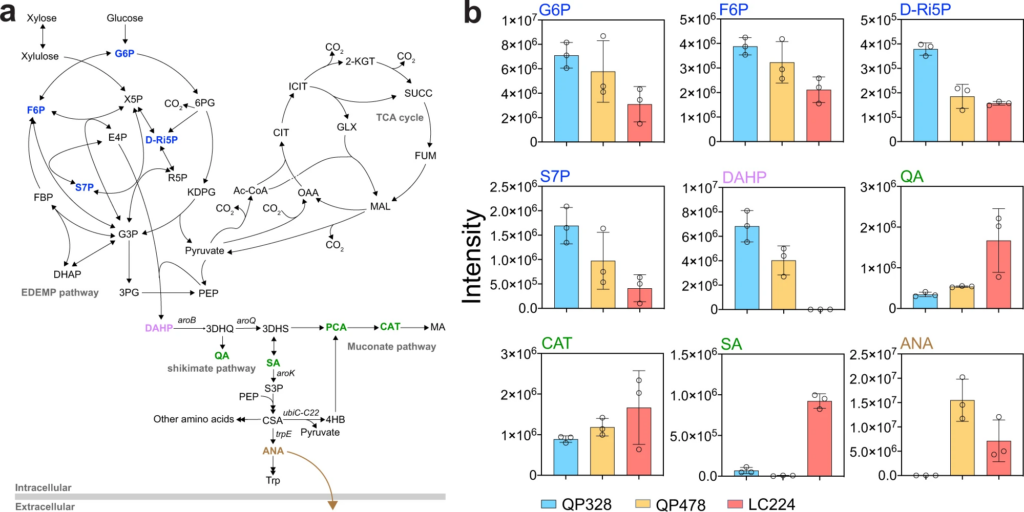
Metabolomics
Quantify metabolite levels in engineered microbes to identify bottlenecks
Metabolites are the chemical intermediates or end products resulting from biological processes. Monitoring changes in the metabolites present within engineered pathways can shed light on bottlenecks in the flow of carbon and other components. This can also reveal potential improvements to increase production and improve economics.
Targeted Metabolomics
Targeted metabolomics involves measuring a group of specific metabolites or metabolites in specific metabolic pathways. We use gas and liquid chromatography methods with mass spectrometry (GC-MS, LC-MS) for these analyses. Targeted metabolomics is primarily used to report the concentration of bioproducts or byproducts present in medium or biomass samples.
Untargeted Metabolomics
Untargeted metabolomics involves characterizing all metabolites present in a sample, without focusing on a specific pathway. By leveraging the advancements of analytical instruments (LC-MS and GC-MS) and computational databases, we can detect hundreds of thousands of metabolites by one injection of extracted metabolites after matching with metabolomics databases. This information provides relative abundance changes of each metabolite from sample to sample, helping us understand how the entire biological system is functioning.
USE CASE
Agile BioFoundry researchers used metabolomics to determine the impact of genetic modifications made in Pseudomonas putida for muconate production from glucose and xylose.
The metabolomics analysis provided a better understanding of the differences between three selected strains. The researchers were able to determine which pathways resulted in a greater accumulation of metabolites.

An intracellular and extracellular metabolomics analysis of P. putida strains grown on glucose and xylose. A simplified metabolic pathway (left) and the intensity of selected metabolites in three selected strains (right).
Publications
- Integration of Proteomics and Metabolomics Into the Design, Build, Test, Learn Cycle to Improve 3-Hydroxypropionic Acid Production in Aspergillus pseudoterreus
- Multi-Omics Driven Metabolic Network Reconstruction and Analysis of Lignocellulosic Carbon Utilization in Rhodosporidium toruloides
- Muconic acid production from glucose and xylose in Pseudomonas putida via evolution and metabolic engineering
- PeakDecoder enables machine learning-based metabolite annotation and accurate profiling in multidimensional mass spectrometry measurements